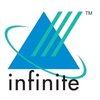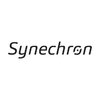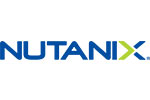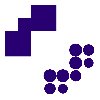
i
NetApp
Filter interviews by
NetApp Software Engineer Interview Questions and Answers
30 Interview questions
NAS (Network Attached Storage) is file-based, while SAN (Storage Area Network) is block-based storage, serving different needs.
NAS is typically used for file sharing over a network, suitable for home and small business environments.
SAN provides high-speed block-level storage, ideal for enterprise applications and databases.
NAS uses standard network protocols like NFS and SMB, while SAN uses protocols like iSCSI an...
Boot media is the storage device used to load an operating system during the boot process.
Boot media can be a hard drive, USB flash drive, CD/DVD, or network location.
The BIOS/UEFI firmware initializes hardware and locates the boot media.
The bootloader on the boot media loads the operating system kernel into memory.
Examples of boot media include Windows installation USBs and Linux live CDs.
The process of boot involves loading the operating system into memory and initializing the hardware components of a computer.
BIOS or UEFI firmware is executed first
Bootloader is loaded into memory
Operating system kernel is loaded and initialized
Hardware components are initialized
Control is passed to the operating system
The OSI stack consists of 7 layers that define the functions and protocols of network communication.
Physical layer: Deals with the physical transmission of data.
Data Link layer: Provides error-free transmission over a physical link.
Network layer: Handles routing and logical addressing.
Transport layer: Ensures reliable data delivery and manages end-to-end connections.
Session layer: Establishes, manages, and termina...
To construct an almost balanced binary tree from an incoming stream of numbers.
Use a self-balancing binary search tree like AVL or Red-Black tree.
Insert the numbers from the stream into the tree.
Perform rotations or rebalancing operations as necessary to maintain balance.
Consider using a priority queue to handle the incoming stream efficiently.
Netapp is a multinational storage and data management company.
Netapp specializes in providing storage solutions for businesses and organizations.
They offer a wide range of products and services including storage systems, software, and cloud services.
Netapp's solutions help organizations manage and protect their data, improve efficiency, and enable data-driven decision making.
They have a strong presence in the ente...
Implementing autocomplete feature for search queries
Use a trie data structure to store the search queries
As the user types, traverse the trie to find matching prefixes
Return the suggestions based on the matching prefixes
Consider using a ranking algorithm to prioritize suggestions
Alignment issues in structures occur due to memory padding and alignment requirements.
Structures may have unused memory space due to alignment requirements.
Padding is added to align structure members on memory boundaries.
Alignment issues can lead to wasted memory and decreased performance.
Compiler directives like #pragma pack can be used to control alignment.
Example: struct MyStruct { char a; int b; char c; };
NTFS and FAT are file systems used in Windows operating systems with differences in features and capabilities.
NTFS supports file and folder permissions, while FAT does not.
NTFS has built-in support for file compression and encryption, while FAT does not.
NTFS has a journaling feature that helps in recovering from system crashes, while FAT does not.
NTFS supports larger file sizes and partition sizes compared to FAT.
...
The minimum number of packets required to pack 51 apples such that any number of apples between 1 and 51 can be given.
The minimum number of packets required is 6.
Each packet should contain a power of 2 number of apples.
The packets should be of sizes: 1, 2, 4, 8, 16, and 20.
By combining these packets, any number of apples between 1 and 51 can be given.
NetApp Software Engineer Interview Experiences
4 interviews found
I applied via Job Fair and was interviewed in Oct 2024. There was 1 interview round.
(2 Questions)
- Q1. Dsa questions related to project
- Q2. Project based q and a
(1 Question)
- Q1. What are the differences between NAS & SAN?
Write a string and count only the number of characters without spaces.
(2 Questions)
- Q1. Explain the process of boot?
- Ans.
The process of boot involves loading the operating system into memory and initializing the hardware components of a computer.
BIOS or UEFI firmware is executed first
Bootloader is loaded into memory
Operating system kernel is loaded and initialized
Hardware components are initialized
Control is passed to the operating system
- Q2. Explain the process of boot media
Skills evaluated in this interview
I applied via Referral
Interview Questionnaire
34 Questions
- Q1. Give a few technical differences between Windows and UNIX
- Ans.
Windows and UNIX have several technical differences.
Windows has a graphical user interface (GUI) while UNIX is primarily command-line based.
Windows uses the NTFS file system while UNIX typically uses the ext4 file system.
Windows supports a wide range of software applications, while UNIX is known for its stability and security.
Windows has a larger user base and is more commonly used for personal computers, while UNIX is...
- Q2. Give a few differences between NTFS and FAT
- Ans.
NTFS and FAT are file systems used in Windows operating systems with differences in features and capabilities.
NTFS supports file and folder permissions, while FAT does not.
NTFS has built-in support for file compression and encryption, while FAT does not.
NTFS has a journaling feature that helps in recovering from system crashes, while FAT does not.
NTFS supports larger file sizes and partition sizes compared to FAT.
NTFS ...
- Q3. Mention the layers in OSI stack
- Ans.
The OSI stack consists of 7 layers that define the functions and protocols of network communication.
Physical layer: Deals with the physical transmission of data.
Data Link layer: Provides error-free transmission over a physical link.
Network layer: Handles routing and logical addressing.
Transport layer: Ensures reliable data delivery and manages end-to-end connections.
Session layer: Establishes, manages, and terminates s...
- Q4. Explain in detail the concept of NAT and DHCP
- Ans.
NAT (Network Address Translation) is a technique used to translate private IP addresses to public IP addresses, allowing devices on a private network to communicate with the internet. DHCP (Dynamic Host Configuration Protocol) is a network protocol that automatically assigns IP addresses and other network configuration parameters to devices on a network.
NAT allows multiple devices on a private network to share a single...
- Q5. What is the difference between hub, switch, and router?
- Ans.
A hub is a simple networking device that connects multiple devices in a network. A switch is a more advanced device that filters and forwards data packets. A router is a device that connects multiple networks and directs data packets between them.
A hub operates at the physical layer of the OSI model, while a switch operates at the data link layer.
A hub broadcasts data to all connected devices, while a switch selectivel...
- Q6. What is collision domain? How does bridge segregate collision domains?
- Ans.
Collision domain is a network segment where collisions can occur. Bridges segregate collision domains by creating separate segments.
Collision domain is a section of a network where network devices share the same bandwidth and can collide with each other.
Collisions occur when two or more devices transmit data simultaneously on a shared medium.
Bridges create separate collision domains by dividing a network into multiple ...
- Q7. Given a routine which sorts only positive numbers, write a wrapper around it to sort both positive and negative numbers
- Ans.
Create a wrapper to sort both positive and negative numbers using a positive-only sorting routine.
Use the existing sorting routine for positive numbers.
Transform negative numbers to positive by taking their absolute values.
Sort the transformed array using the positive sorting routine.
Restore the original sign of the numbers after sorting.
Example: Input [-3, 1, -2, 4] becomes [1, 2, 3, 4] and then outputs [-3, -2, 1, 4]...
- Q8. Suggest a suitable combination of array and hashmap to design the underlying data structures behind an educational institution’s website. The website supports selection of a particular department, a part...
- Ans.
A combination of array and hashmap can be used to design the underlying data structures for an educational institution's website.
Use an array to store the departments available in the institution.
Each department can be represented as a key in the hashmap.
The value corresponding to each department key in the hashmap can be another hashmap.
This nested hashmap can store the courses available in the department.
The courses ...
- Q9. Give the design considerations for a client server system wherein the client gets a virtual operating system on the fly through the network from a server consisting of several such operating systems
- Ans.
Design considerations for a client-server system with virtual operating systems on the fly
Scalability: Ensure the system can handle multiple clients requesting virtual operating systems simultaneously
Resource allocation: Manage resources efficiently to provide virtual operating systems to clients
Network bandwidth: Optimize network usage to deliver virtual operating systems quickly
Security: Implement measures to protect...
- Q10. What are the different types of virtualization?. I was asked to differentiate between system and process virtualization
- Q11. Explain VMware’s virtualization on a multicore machine
- Ans.
VMware's virtualization on a multicore machine allows for efficient utilization of resources and improved performance.
VMware's virtualization technology enables the creation of multiple virtual machines (VMs) on a single multicore machine.
Each VM can run its own operating system and applications, isolated from other VMs.
The hypervisor, such as VMware ESXi, manages the allocation of CPU, memory, and other resources to e...
- Q12. Pack 51 apples in minimum number of packets such that with the packets I have made, I should be able to give any number of apples between 1 and 51
- Ans.
The minimum number of packets required to pack 51 apples such that any number of apples between 1 and 51 can be given.
The minimum number of packets required is 6.
Each packet should contain a power of 2 number of apples.
The packets should be of sizes: 1, 2, 4, 8, 16, and 20.
By combining these packets, any number of apples between 1 and 51 can be given.
- Q13. Write a program to implement strstr
- Ans.
Program to implement strstr function in C++
Use two nested loops to compare each character of the haystack and needle
If a match is found, return the starting index of the substring
If no match is found, return -1
- Q14. From an incoming stream of numbers, construct a binary tree such that it is almost balanced
- Ans.
To construct an almost balanced binary tree from an incoming stream of numbers.
Use a self-balancing binary search tree like AVL or Red-Black tree.
Insert the numbers from the stream into the tree.
Perform rotations or rebalancing operations as necessary to maintain balance.
Consider using a priority queue to handle the incoming stream efficiently.
- Q15. How would I implement the autocomplete feature for search queries?
- Ans.
Implementing autocomplete feature for search queries
Use a trie data structure to store the search queries
As the user types, traverse the trie to find matching prefixes
Return the suggestions based on the matching prefixes
Consider using a ranking algorithm to prioritize suggestions
- Q16. What is a semaphore?
- Ans.
A semaphore is a synchronization object that controls access to a shared resource through the use of a counter.
Semaphores can be used to limit the number of threads accessing a resource simultaneously.
They can be used to solve the critical section problem in concurrent programming.
Semaphores can have two types: counting semaphores and binary semaphores.
Counting semaphores allow a specified number of threads to access a...
- Q17. Code the P and V operations of a semaphore
- Ans.
The P and V operations are used to control access to a shared resource using a semaphore.
P operation (wait operation) decreases the value of the semaphore by 1, blocking if the value is already 0.
V operation (signal operation) increases the value of the semaphore by 1, releasing a waiting process if any.
P and V operations are typically used in synchronization mechanisms to prevent race conditions and ensure mutual excl...
- Q18. Explain REST web service
- Ans.
REST web service is an architectural style for designing networked applications that use HTTP as the communication protocol.
REST stands for Representational State Transfer
It is based on a client-server model
It uses standard HTTP methods like GET, POST, PUT, DELETE
Resources are identified by URIs
Responses are typically in JSON or XML format
- Q19. Is HTTP a stateless or stateful protocol?
- Ans.
HTTP is a stateless protocol.
HTTP is stateless because it does not retain any information about previous requests or responses.
Each request is treated as an independent transaction, and the server does not maintain any knowledge of the client's state.
To maintain state, cookies or session management techniques can be used.
Statelessness allows for scalability and simplicity in web applications.
- Q20. What is shared memory?
- Ans.
Shared memory is a memory space that can be accessed by multiple processes or threads simultaneously.
Shared memory allows processes or threads to communicate and share data efficiently.
It is typically used in inter-process communication (IPC) to avoid the overhead of copying data between processes.
Shared memory can be implemented using operating system mechanisms like memory-mapped files or system calls.
Example: Multip...
- Q21. What motivates me in life?
- Ans.
I am motivated by challenges, continuous learning, and the impact of my work on others, driving me to innovate and grow.
Solving complex problems: I thrive on tackling difficult coding challenges, like optimizing algorithms for better performance.
Continuous learning: I enjoy keeping up with new technologies, such as learning about AI and machine learning to enhance my skill set.
Making an impact: Contributing to projects...
- Q22. Explain the alignment issues in structures
- Ans.
Alignment issues in structures occur due to memory padding and alignment requirements.
Structures may have unused memory space due to alignment requirements.
Padding is added to align structure members on memory boundaries.
Alignment issues can lead to wasted memory and decreased performance.
Compiler directives like #pragma pack can be used to control alignment.
Example: struct MyStruct { char a; int b; char c; };
- Q23. I am given two files viz. f1.c, f2.c, both having a call to malloc(). Can the address of the locations returned by these two be same?
- Ans.
Addresses from malloc in different files can be the same, depending on memory allocation and system behavior.
malloc() allocates memory from the heap, which is managed by the operating system.
If both f1.c and f2.c are run in the same process, they may receive the same address if the memory is freed.
In separate processes, the address space is isolated, so malloc() can return the same address in different processes.
Exampl...
- Q24. Explain memory management unit
- Ans.
Memory Management Unit (MMU) is a hardware component that manages memory access and translation between virtual and physical addresses.
MMU is responsible for translating virtual addresses used by programs into physical addresses in the computer's memory.
It provides memory protection by assigning access permissions to different memory regions.
MMU also handles memory allocation and deallocation, ensuring efficient use of...
- Q25. What is a socket?
- Ans.
A socket is an endpoint for communication between two machines over a network.
A socket is a software abstraction that allows programs to send and receive data over a network.
It provides a mechanism for inter-process communication between applications running on different machines.
Sockets can be used for various network protocols such as TCP/IP, UDP, etc.
They are identified by an IP address and a port number.
Examples of...
- Q26. I was asked in detail the concept of type casting in C
- Ans.
Type casting in C allows conversion between different data types, enhancing flexibility in operations and memory management.
Implicit Casting: Automatic conversion by the compiler, e.g., int to float.
Explicit Casting: Manual conversion using (type) notation, e.g., (int)3.14.
Example of Implicit: float f = 5; // int 5 is converted to float.
Example of Explicit: int i = (int)3.99; // float 3.99 is converted to int 3.
Casting...
- Q27. Can I declare a structure called ‘a’ which contains a structure called ‘b’ and ‘b’ in turn contains ‘a’?
- Ans.
Yes, it is possible to declare a structure 'a' that contains a structure 'b' and 'b' in turn contains 'a'.
To achieve this, we can use forward declaration of one of the structures.
By using a pointer or reference to the other structure inside the first structure, we can avoid recursive definition.
This allows us to create a nested structure hierarchy.
- Q28. How do I find the offset of a member of a structure object? How would I do the same if I am not allowed to create the object at all?
- Ans.
To find the offset of a member of a structure object, use the 'offsetof' macro. If not allowed to create the object, use 'sizeof' and pointer arithmetic.
Use the 'offsetof' macro to find the offset of a member within a structure object
If not allowed to create the object, use 'sizeof' to get the size of the structure and perform pointer arithmetic
- Q29. I was asked to tell something about me that was not in my resume?
- Q30. What are my strengths?
- Q31. What do I know about Netapp?
- Ans.
Netapp is a multinational storage and data management company.
Netapp specializes in providing storage solutions for businesses and organizations.
They offer a wide range of products and services including storage systems, software, and cloud services.
Netapp's solutions help organizations manage and protect their data, improve efficiency, and enable data-driven decision making.
They have a strong presence in the enterpris...
- Q32. What do I think about higher studies?
- Ans.
Higher education can enhance skills, open opportunities, and foster personal growth in the software engineering field.
Advanced degrees can lead to specialized roles, such as data scientist or machine learning engineer.
Higher education often provides access to cutting-edge research and technologies.
Networking opportunities with peers and industry leaders can be invaluable.
Many companies value candidates with advanced de...
- Q33. What is my family background? Do I have any siblings?
- Ans.
I come from a close-knit family with two siblings, an older brother and a younger sister.
Close-knit family
Two siblings - older brother and younger sister
- Q34. My preferences regarding the various job profiles they had to offer?
- Ans.
I am interested in job profiles that involve software development, problem-solving, and continuous learning.
I prefer job profiles that allow me to work on challenging projects and utilize my technical skills.
I am interested in roles that involve software development, coding, and debugging.
I enjoy problem-solving and would like a job that challenges me to think creatively and analytically.
I value continuous learning and...
Interview Preparation Tips
College Name: NA
Skills evaluated in this interview
Top trending discussions






Interview questions from similar companies

Software Engineer Interview Questions & Answers
Infinite Computer Solutionsposted on 9 Nov 2021
I applied via Campus Placement and was interviewed before Nov 2020. There were 5 interview rounds.
Interview Questionnaire
1 Question
- Q1. Asked question based on Profile
Interview Preparation Tips

I appeared for an interview in Jun 2017.
Interview Questionnaire
1 Question
- Q1. Questions related to core java, advanced java, programs,
Interview Preparation Tips
Experience: Previous work experience scenarios based questions

I applied via LinkedIn and was interviewed before Jun 2020. There were 3 interview rounds.
Interview Questionnaire
1 Question
- Q1. Basics Of JS

I applied via Naukri.com and was interviewed before Feb 2021. There were 2 interview rounds.

(1 Question)
- Q1. About technical what your role is
Interview Preparation Tips

Software Engineer Interview Questions & Answers
HTC Global Servicesposted on 15 Jul 2022
I applied via Approached by Company and was interviewed before Jul 2021. There were 2 interview rounds.
Basic programming questions
(1 Question)
- Q1. Salary and self intro discussion
Interview Preparation Tips

I applied via Naukri.com and was interviewed in Apr 2021. There were 3 interview rounds.
Interview Questionnaire
1 Question
- Q1. Related to Core Java, Data Structure & Algorithm (Medium), SQL and Recent Project Related Questions.
Interview Preparation Tips
NetApp Interview FAQs
Some of the top questions asked at the NetApp Software Engineer interview -
Tell us how to improve this page.
NetApp Interviews By Designations
- NetApp Software Developer Interview Questions
- NetApp Software Engineer Interview Questions
- NetApp Mts Software Engineer Interview Questions
- NetApp Business Analyst Interview Questions
- NetApp Professional Service Engineer Interview Questions
- NetApp Sales Analyst Interview Questions
- NetApp Artificial Intelligence Intern Interview Questions
- NetApp Senior Engineer Interview Questions
- Show more
Interview Questions for Popular Designations
- Software Developer Interview Questions
- Senior Software Engineer Interview Questions
- Senior Engineer Interview Questions
- System Engineer Interview Questions
- Associate Software Engineer Interview Questions
- Project Engineer Interview Questions
- Lead Engineer Interview Questions
- Software Development Engineer Interview Questions
- Show more
Overall Interview Experience Rating
based on 4 interview experiences
Difficulty level
Top Skills for NetApp Software Engineer
Software Engineer Interview Questions from Similar Companies
NetApp Software Engineer Reviews and Ratings
based on 2 reviews
Rating in categories
|
Member Technical Staff
192
salaries
| ₹19 L/yr - ₹41.2 L/yr |
|
Software Engineer
113
salaries
| ₹18.3 L/yr - ₹34.3 L/yr |
|
Professional Service Engineer
110
salaries
| ₹9.5 L/yr - ₹27.4 L/yr |
|
Technical Staff Member 3
87
salaries
| ₹26.8 L/yr - ₹46.2 L/yr |
|
Mts Software Engineer
74
salaries
| ₹20.4 L/yr - ₹38 L/yr |

Nutanix

IBM

Oracle

Synechron
- Home >
- Interviews >
- NetApp Interview Questions













